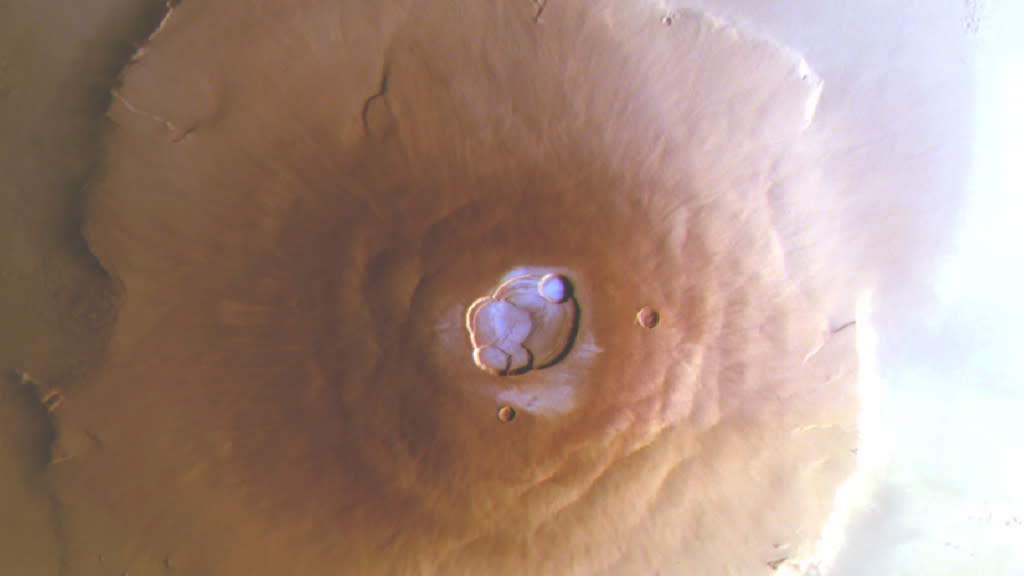Astronomers Discover Frost For First Time On Volcanoes Near Mars' Equator

The European Space Agency's ExoMars and Mars Express missions have detected water frost near Mars's equator, a region previously believed to be too warm for frost formation.
This unexpected find was made atop the Tharsis volcanoes, the tallest in the Solar System. Initially observed by ESA's ExoMars Trace Gas Orbiter (TGO), the frost's presence was subsequently confirmed by both another instrument on TGO and ESA's Mars Express.
"We thought it was impossible for frost to form around Mars's equator, as the mix of sunshine and thin atmosphere keeps temperatures relatively high at both surface and mountaintop - unlike what we see on Earth, where you might expect to see frosty peaks," said Adomas Valantinas, who discovered the frost during his PhD at the University of Bern, Switzerland, and is now a postdoctoral researcher at Brown University, USA.
The frost, visible in a perspective view of Olympus Mons captured by Mars Express, forms in the volcanoes' caldera-like hollows, shining blue in the images.
"Its existence here is exciting and hints that there are exceptional processes at play that are allowing frost to form," Valantinas added. The Tharsis region, hosting the massive Olympus Mons and Tharsis Montes volcanoes (Ascraeus, Pavonis, and Arsia Mons), presents unique conditions. These colossal volcanoes, towering up to three times the height of Mount Everest, have calderas formed by past volcanic activity. Researchers propose that the unique air circulation in these areas creates a microclimate conducive to frost formation.

 Yahoo News
Yahoo News 
